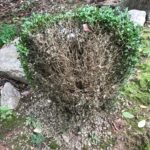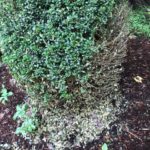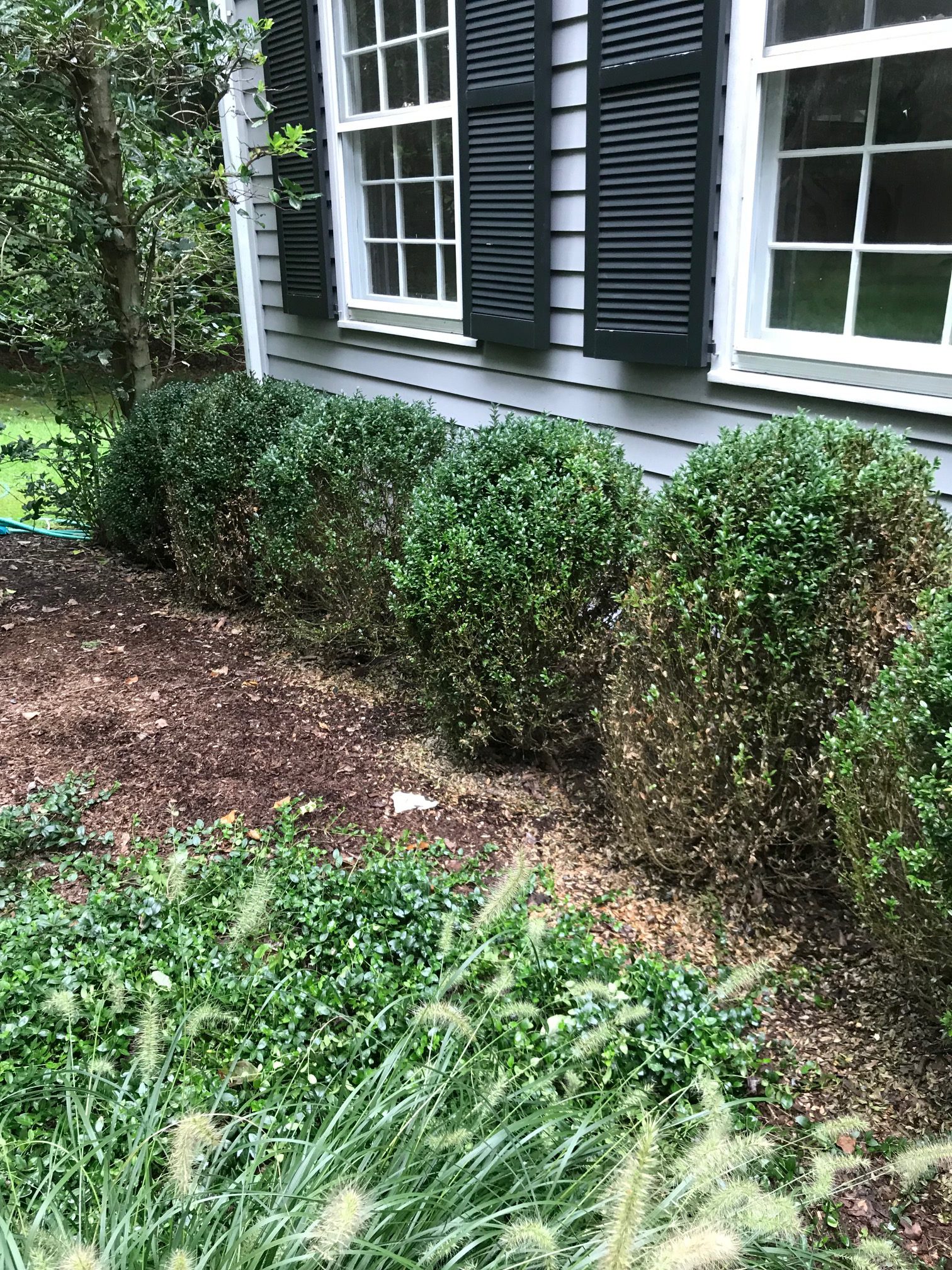Concerned homeowners were calling and asking me to look at their boxwood hedge that wasn’t looking well. Looking at sick boxwoods was nothing new. Boxwood Leafminer and Psyllid had been attacking this species for years. As I wrote in my 2013 blog post, Managing Boxwood Monocultures, for 30 years we have been planting too many boxwoods. Boxwoods are one of the few deer resistant evergreens. To stop the threat of deer damage we created the perfect habitat for insects and diseases that feed on this plant species. The difference is there is no treatment for Boxwood Blight. Worried homeowners looked to me to fix their sick plants and unfortunately the only remedy was to rip them out and start over. Thousands of dollars in landscaping was suddenly infected beyond recovery.




Examples of Boxwood Blight devastation.
The growers knew the damage this disease was capable of. Stories of boxwood growers burning entire fields were told at trade shows and landscapers were warned to only purchase from reputable suppliers. Boxwood Blight did not exist in our natural environment and could only enter our landscaping by riding on infected plants from a nursery or garden center. Stopping the spread of this invisible pathogen proved impossible.
Now that it is here, it will inevitably spread. The sticky spores will cling to our hands, clothes, pruning shears and lawn mowers. When the weather conditions are correct, the spores will infect the leaves and stems causing black blotches and defoliation. After the initial symptoms appear the plants may temporarily recover, only to have the disease emerge again sapping the plants of energy until it ultimately succumbs.
My business is curing plant problems, and usually there is a remedy for most pests and pathogens. But with this disease the cost may not be worth the cure. Currently the only course of treatment is applications of chlorothalonil every 10 days when the weather is around 60 degrees. Even then, if the weather conditions are favorable to the fungus you may still get an outbreak. Spending hundreds or thousands of dollars annually with no guarantee of infection prevention is probably more than most would want to invest. It explains why growers have resorted to burning thousands of plants in their fields.
For most people, the best advice is to rip out their Boxwoods once they see symptoms and plant something, anything other than boxwood. And if you’re planning a new landscaping project look for alternative species. Some varieties of boxwood are less susceptible to the Blight, but none are immune. Best to use holly, azaleas, rhododendrons or anything other than boxwood.
So say “bye bye” to the boxwood. They are still here for now, but won’t be for long. And remember that variety is the spice of life. When everyone else is planting boxwood, andromeda and spruce because the landscaper says the deer don’t eat them, remember you may trade one problem for a dozen worse ones.


Recent Comments